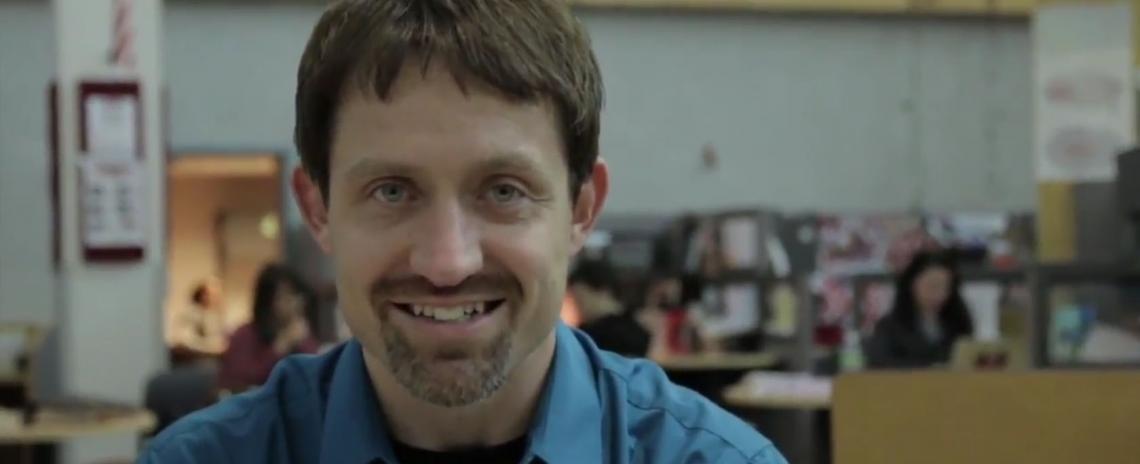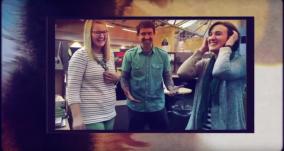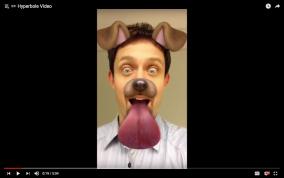Personalized Learning: Sparking Creativity for Students & Teachers
Personalized Learning: Sparking Creativity for Students & Teachers
By Lindsey Cook, NCSA Communications Specialist
For Omaha Westside High School English teacher Andrew Easton, every class begins with a handshake. It’s a rapport-building gesture he credits his grandfather for inspiring. Easton’s commitment to building individualized and supportive relationships with his students has served his classroom well as he helps bring in a new personalized learning experience to Westside.
“Personalized learning” has officially entered the education lexicon and is loosening up the ideas of one-size-fits-all instruction. Easton said this type of method gives students “voice in choice” when it comes to their education. His students now have some say in the pace of the unit and sometimes can decide how to demonstrate their comprehension of the material in ways that best emphasize their strengths. Learning is supplemented with videos, games, lectures and other materials to keep students engaged. For Easton, personalized learning has given him an opportunity to blend his love of technology with his more creative side to give his students a well-rounded and customizable lesson plan that is fun, accessible and informative.
When Easton previously taught in a suburban Kansas high school, he initiated a similar personalized learning model in his classroom. When it came time to assign a 300-page memoir and a corresponding 15-page packet about growing up in poverty in 1930s Ireland, Easton worried it could lead to burnout among his seniors entering the third quarter of their final year. His group of students had wide-ranging abilities, some qualified for AP level courses and some were assisted by special education teachers. By allowing each the flexibility to plot out their studying timelines and having input in their learning methodologies, Easton felt students became more immersed in the material. Easton took over the school’s empty computer lab and created a learning space that gave each student one-on-one access to a computer along with side rooms for listening to audiobooks or the mini-lectures he offered. The unit ended with group projects presenting to local businesses and a panel of school faculty about how to tackle poverty in the Kansas City metro area.
Years later when Westside High School decided to pilot personalized learning in select classrooms, Easton was chosen as one of the first to implement it. It sounded similar to what he tried in Kansas and he had a hunch which direction he’d go. He began incorporating videos for students to watch and he said his students became more vocal about their lesson plans, asking questions about adding and changing aspects of the unit. They also had constructive criticism for their teacher. Some of those videos he chose? They were boring.
“I looked into it, and they're honest!” said Easton, laughing. “So, I looked online and I thought, a teacher really needs to be creating the videos because the students have a report with you and they watch because it's your picture, it's your voice, it's you on camera. I went and checked out a camera and went into the library and thought I was doing a really innovative thing.” The only problem? “They were just about as boring as the videos I had posted to begin with! And it didn't take long for them to tell me that, too. Which is fine, I appreciate it,” said Easton. For more entertaining videos, Easton decided to head back to class as a student himself. Giving up his planning periods for a semester, Easton took an Introduction to Video class at Westside to learn shooting tips, editing tricks and the basics of making a great video. And he said it has paid off.
Using humor, pop culture references, some willing guest stars and new editing skills, an Easton has created a YouTube channel with edu-tainment videos his students can click and use as supplemental on-demand learning. His videos explain concepts such as symbolism, hyperbole and onomatopoeia. Each are easy to digest and full of humor and cameo appearances from fellow English department faculty and students. Easton’s commitment to innovating in the classroom made him a prime pick as PBS’s 2016 LearningMedia Digital Innovator representative for Nebraska.
“We still need to write and have certain things that are standard in academics,” said Easton, “but there should be opportunity within the units to play upon student strengths and find where those aptitudes can meet the core subject area or the content that you're going through at that time.”




